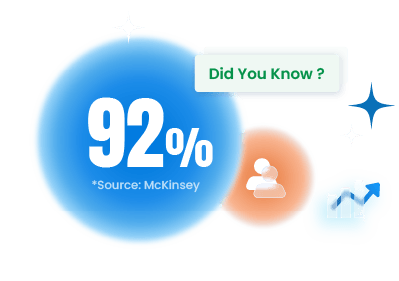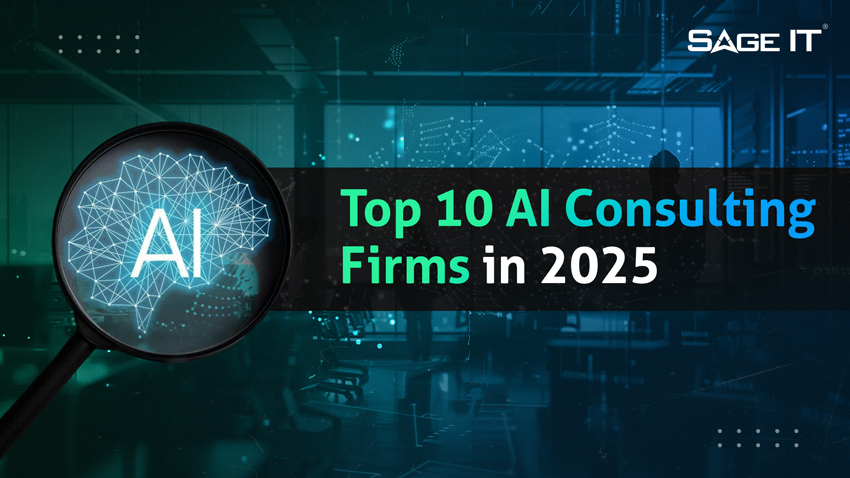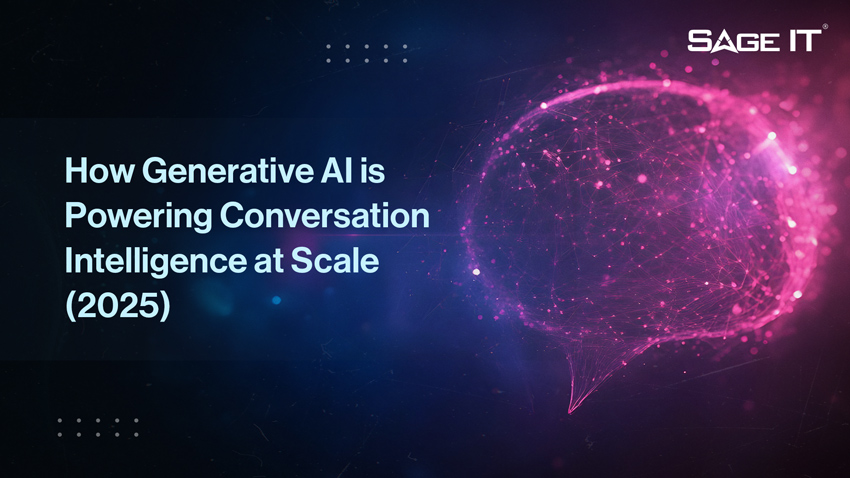Natural Language Processing (NLP) is a technology that has taken the world by storm. It is a branch of artificial intelligence that helps machines interact with human language in a more natural and intuitive way. In this comprehensive guide, we will dive deep into the world of NLP. We will begin by understanding the basics of NLP and how computers interact with human language. We will then take a look at the historical development of NLP, its evolution over the years, and current trends in the field. Furthermore, we will explore its future potential and upcoming innovations. We will also examine the various applications of NLP across industries, such as healthcare, finance, and customer service. Lastly, we will discuss the challenges and ethical considerations in NLP development and whether its potential outweighs its challenges.
Understanding Natural Language Processing (NLP)
NLP endeavors to close the gap between human language and computer comprehension, encompassing language processing, understanding, and generation. It is an interdisciplinary field, drawing from computational linguistics, AI, and computer science. NLP techniques find application in multiple domains, including machine translation, sentiment analysis, text data processing, speech recognition, and semantic analysis. These applications leverage diverse NLP tasks and algorithms. For instance, Google Translate, powered by Google Cloud, employs NLP to facilitate translation. Similarly, most common tools in NLP aid in sentiment analysis and language processing.
The Basics of NLP
NLP encompasses a wide array of tasks, from text classification to information retrieval and entity recognition. It covers natural language understanding, generation, and feature extraction. NLP models are designed to handle unstructured data and smaller units of human communication, while tools and algorithms aid in processing and analyzing natural language. These tools and algorithms play a key role in understanding customer feedback and voice commands, and common tools include Google Translate and Google Cloud. Additionally, NLP algorithms are essential for various NLP tasks, making them an integral part of language processing.
How Computers Interact with Human Language
Interacting with human language, computers utilize neural network models, as seen in NLP applications like Apple’s Siri and Amazon’s Alexa. These applications depict seamless human-computer interaction. Thanks to NLP’s computational methods, text analysis, messaging, and customer service interactions are made possible. Drawing from deep learning models and sentiment analysis, NLP enables effective human language processing. Additionally, NLP’s application in search engine optimization significantly contributes to enhancing customer satisfaction. This interaction between computers and human language showcases the incredible capabilities of NLP in bridging the gap between technology and communication.
The Historical Development of NLP
The development of NLP traces back to language translation and information retrieval, eventually leading to advancements in machine translation models. Over time, NLP has expanded to include voice commands, text analysis, and neural learning, demonstrating progression from the turing test to natural language understanding and computer language processing. This evolution has culminated in the creation of generative AI and text data processing. NLP tasks have been revolutionized by Google Translate and Google Cloud, integrating NLP algorithms and the most common tools. The historical journey of NLP has paved the way for its current impact and future potential in various industries.
The Origins of NLP
The inception of NLP can be traced back to the exploration of human communication and the development of programming languages. Its roots are entwined with computational linguistics, information retrieval, and artificial intelligence, laying the foundation for its evolution. Initially, NLP focused on tasks like stop word removal, text classification, and language models, paving the way for advancements in natural language understanding and machine translation. The historical journey includes early work in information retrieval and language models, shaping NLP into the dynamic field it is today.
Evolution and Progress Over the Years
The advancements in NLP over the years have led to the development of hugging face and natural language toolkit, marking a significant evolution. Progress in machine translation, feature extraction, and text data processing has been instrumental in enhancing NLP’s capabilities. Furthermore, advancements in neural network models and natural language generation showcase the substantial progress made within the field. The application of deep learning models and information retrieval techniques has further contributed to NLP’s evolution. As a result, NLP’s progress has positively impacted customer satisfaction and the integration of voice commands, reflecting its growing influence across various domains.
Current Trends in NLP
Technological advancements in NLP span google translate, google cloud, and nlp algorithms. NLP’s trends encompass large language models, neural learning, and social media analysis. Impact of AI on NLP is evident in sentiment analysis, text analysis, and natural language generation. Furthermore, current NLP trends include search engine optimization, text messages, and natural language processing applications, covering nlp tasks and most common tools. These trends also extend to semantic analysis, customer feedback analysis, and text data processing, reflecting the dynamic nature of NLP’s evolution and application.
Technological Advancements in NLP
Recent advancements in NLP encompass the latest use of deep learning models and neural network algorithms. The progress in NLP technology is evident in natural language generation, machine translation, and sentiment analysis applications. Additionally, emerging NLP technologies are focusing on voice commands, text data processing, and natural language toolkit, indicating a significant shift in the landscape. Moreover, the technological advancements in NLP include feature extraction, machine translation, and customer service applications, demonstrating the expanding reach and impact of NLP across various domains. These developments highlight the continuous evolution and diversification of NLP tasks, reaffirming the significance of NLP algorithms and the most common tools in shaping the future of NLP.
Impact of AI on NLP
The evolution of NLP has been heavily influenced by artificial intelligence (AI), particularly through the development of large language models and generative AI. This integration has resulted in significant advancements in text data processing and customer feedback analysis, showcasing the symbiotic relationship between NLP and AI. Many organizations today accelerate this adoption by working with an experienced AI development services provider that can design, implement, and optimize NLP-driven solutions for real business outcomes. Moreover, AI’s impact on NLP is observable in various aspects such as voice commands, feature extraction, sentiment analysis, social media analysis, semantic analysis, and machine translation models, highlighting the adaptability and versatility of NLP to the AI landscape. The synergy between AI and NLP extends to natural language understanding, neural learning, and text classification, marking a pivotal moment in the trajectory of NLP’s development.
Future Potential of NLP
The future potential of NLP encompasses natural language comprehension, text analysis, and voice command integration. Advancements in neural learning, semantic analysis, and customer satisfaction assessment are on the horizon. Future applications will prioritize text data processing, machine translation, and natural language generation. Large language models, sentiment analysis, and neural network advances are central to the future of NLP. Anticipated areas of impact include customer service, search engine optimization, and social media analysis. The evolving landscape presents opportunities for enhanced NLP tasks, such as those provided by Google Translate and Google Cloud, through the implementation of advanced NLP algorithms and most common tools.
Predicted Growth and Development of NLP
The evolution of NLP is poised to drive significant progress in AI and machine learning, revolutionizing human-machine communication and language comprehension. Anticipated development in NLP will also enhance sentiment analysis and speech recognition, making profound impacts on social media, customer feedback, and satisfaction. As NLP continues to advance, attention is drawn to the potential of language models and semantic analysis, offering a promising outlook for the future of NLP applications. This growth signifies a substantial transformation in the way we interact with machines and understand language, reflecting the continual integration of NLP tasks with AI and its most common tools. Google Translate and Google Cloud serve as exemplary platforms showcasing the capabilities of NLP algorithms.
Upcoming Innovations in NLP
The future of NLP holds groundbreaking potential for revolutionizing information retrieval and data analysis. Advancements in NLP will specifically target enhancements in text classification and entity recognition, paving the way for more precise voice commands and advanced language generation. These innovations will significantly contribute to improved natural language understanding and processing. Furthermore, the upcoming developments in NLP are expected to center around large language models and generative AI, propelling the field into a new era of capabilities and possibilities.
NLP Applications Across Industries
NLP plays a significant role in different industries, aiming to enhance various aspects of operations. In healthcare, NLP applications focus on improving medical data analysis and patient care, leveraging computational linguistics and semantic analysis. Similarly, in finance, NLP is utilized for sentiment analysis, customer feedback, and market predictions, utilizing language models and machine translation. Customer service benefits from NLP by enhancing satisfaction and sentiment analysis. Across industries, NLP’s applications emphasize information retrieval and the use of tools like Google Cloud and Google Translate, underpinned by NLP algorithms to facilitate effective language processing.
Use of NLP in Healthcare
In healthcare, NLP aims to enhance clinical data analysis and patient care delivery. It revolves around sentiment analysis and extraction of medical data to improve information retrieval. The focus is on analyzing patient feedback and extracting sentiments while emphasizing natural language understanding. NLP’s application in healthcare highlights the use of large language models to achieve these objectives. This technology has the potential to revolutionize patient care and information management within the healthcare industry. The most common tools used for NLP tasks play a crucial role in achieving these advancements, contributing to the continuous development of healthcare practices.
Role of NLP in Finance
In finance, NLP plays a crucial role in various aspects such as sentiment analysis, customer feedback, and market prediction. Its application enhances text analysis, sentiment extraction, and data classification, ultimately aiming to improve information retrieval and data analysis. Additionally, NLP in finance revolves around customer satisfaction analysis and language processing, highlighting the importance of language models, semantic analysis, and machine translation. Leveraging NLP algorithms and tools like Google Cloud and Google Translate, financial institutions can derive valuable insights from large volumes of unstructured data, making informed decisions and gaining a competitive edge.
NLP in Customer Service
In customer service, NLP focuses on improving customer satisfaction and sentiment analysis. It is applied to voice commands and text data analysis, emphasizing natural language understanding and sentiment extraction. Additionally, NLP is used for customer feedback analysis and sentiment extraction, leveraging large language models and natural language processing algorithms. By employing NLP tasks and the most common tools, customer service departments can enhance their ability to understand and respond to customer needs efficiently. Google Cloud and Google Translate are among the most common tools used for NLP applications in customer service, enabling businesses to provide better support and more personalized interactions with their customers.
Challenges and Ethical Considerations in NLP Development
NLP development presents challenges in feature extraction, unstructured data, and ethical implications, emphasizing customer data privacy and bias detection. It also involves stop word removal, neural network training, and programming language compatibility. Furthermore, challenges extend to search engine optimization, language model training, and text analysis. Ethical considerations highlight data scientist responsibility, customer privacy, and social media analysis. The balance between NLP’s potential and its challenges raises important questions about its future impact and ethical usage.
Does the Potential of NLP Outweigh Its Challenges?
The potential of NLP outweighs its challenges, especially in human communication and language understanding. Despite the obstacles it faces, NLP has the ability to revolutionize customer service, search engine optimization, and data analysis. Its promising applications in voice commands, text analysis, and sentiment analysis draw attention to its immense potential.
Conclusion
In conclusion, Natural Language Processing (NLP) has come a long way in its development and continues to make significant advancements. From its humble beginnings to the current technological breakthroughs, NLP has revolutionized the way computers interact with human language. With the integration of artificial intelligence, NLP has the potential to transform various industries such as healthcare, finance, and customer service. However, it is important to address the challenges and ethical considerations that arise with NLP development. Despite these challenges, the future looks promising for NLP, with predicted growth, upcoming innovations, and widespread applications. As we embrace the possibilities of NLP, it is crucial to ensure responsible and ethical use to maximize its benefits for society.

































